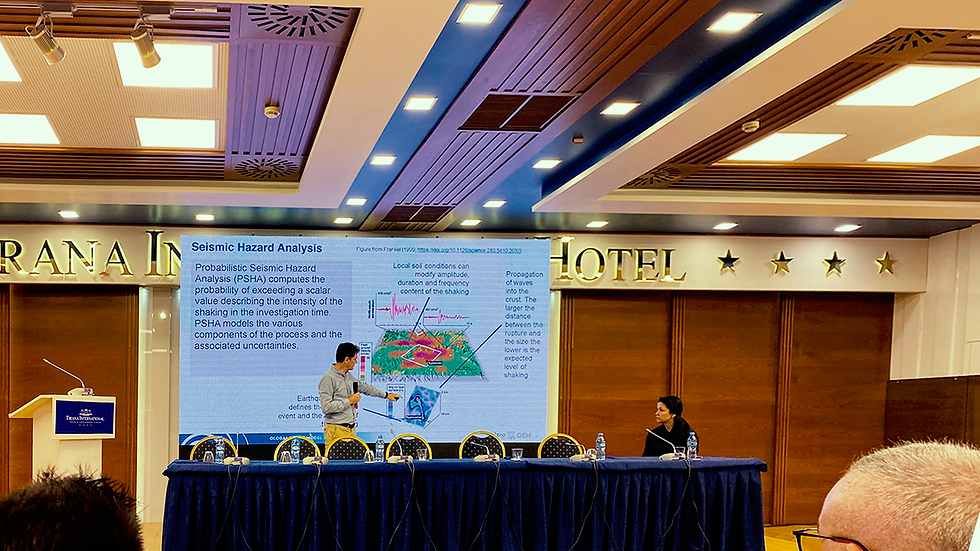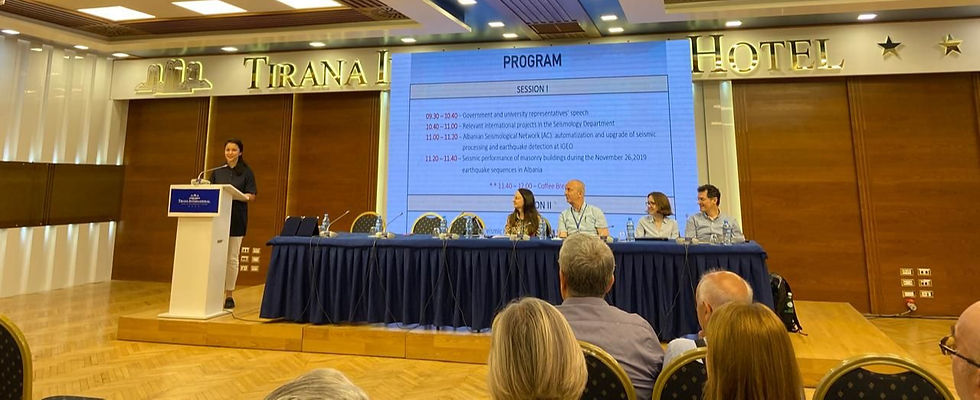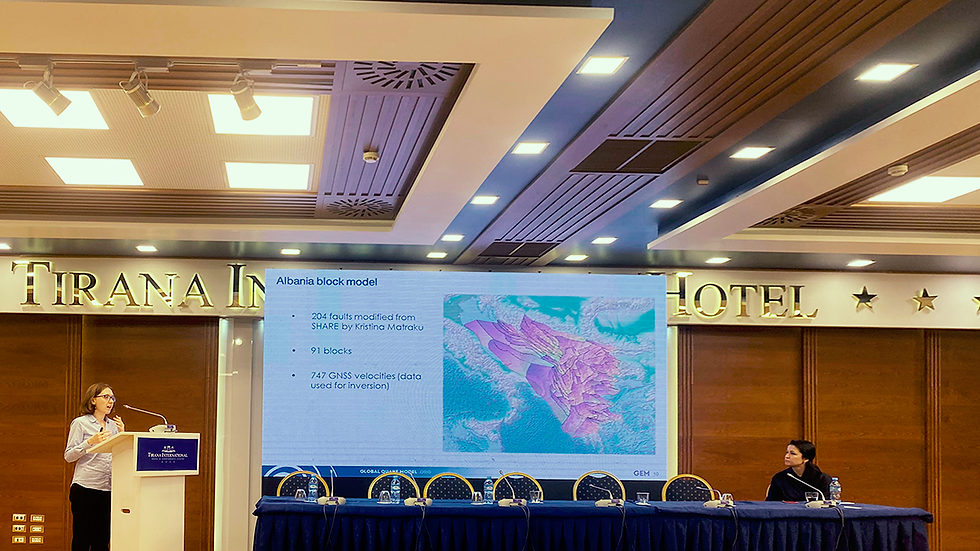Scientific Symposium Unveils Albania's Updated National Seismic Hazard Model
By:
Jul 25, 2024
Jul 25, 2024

Tirana, Albania - July 16, 2024. The Seismology Department of the Institute of Geosciences at the Polytechnic University of Albania recently hosted a scientific symposium at the Tirana International Hotel to present the updated National Seismic Hazard Model of Albania for 2024. This event marks a significant milestone in Albania's efforts to enhance earthquake resilience and modernise its seismic hazard assessments.
The updated model results from a collaborative effort between the Institute of Geosciences (IGEO) and the Global Earthquake Model (GEM) Foundation, developed over a year with funding from the Central European Initiative (https://www.cei.int/) and the Albanian Electricity Corporation (https://kesh.al/en/). The project involved technical workshops aimed at refining Albania’s probabilistic seismic hazard model, held in Pavia, Italy.
"We provided support to IGEO in their effort to update their national seismic hazard model. Overall the collaboration was very positive. The new model developed is an important milestone in Albania’s effort to update their national building code. We are very proud of this collaboration, the possibility of contributing to enhance Albania’s resilience to earthquakes and grateful to the organisations that provided support to this initiative." – Marco Pagani, Head of Seismic Hazards, GEM.

The event brought together experts and stakeholders from academia, and government agencies including members from the Global Earthquake Model (GEM) Foundation Hazard Team (Marco Pagani and Kirsty Bayliss, Seismic Hazard Scientist), to present and discuss the new model.
Anila Xhahysa, Structural Engineer and Head of the Seismology Department at IGEO, led the presentation covering key topics: probabilistic seismic hazard analysis (PSHA) and the OpenQuake Engine; updated datasets for seismic hazard evaluation; ground motion characterisation; new methodologies incorporated into the hazard update; and the resulting assessment. Marco Pagani presented on "Probabilistic Seismic Hazard Analysis (PSHA) and the OpenQuake Engine," detailing the methodologies and software used in the model update. GEM also presented on “Seismic Risk: Needs, Datasets, Platform, and Future Perspectives,” offering a comprehensive overview of the challenges and opportunities in seismic risk assessment.

The collaboration between GEM and IGEO has been essential in enhancing Albania’s seismic hazard modeling capabilities. By leveraging GEM’s advanced methodologies and tools, particularly the OpenQuake Engine, IGEO has enhanced its ability to independently create, update, and refine seismic hazard models. This partnership supports the adoption of Eurocode 8 standards, promoting earthquake-resistant construction practices.
The updated seismic hazard model is expected to improve public and private sector strategies for seismic risk reduction, enhance emergency response planning, and contribute to the modernisation of seismic hazard modeling in Albania.
Anila Xhahysa expressed her optimism that this project will serve as a model for other government agencies in Albania, encouraging a move towards more open and robust hazard modeling frameworks.
"This project marks a transformative step in Albania’s seismic hazard modelling. The collaboration with GEM has encouraged us to move towards more open and robust hazard modeling frameworks, ensuring better earthquake preparedness and resilience. We hope this experience serves as a blueprint for future government initiatives in disaster risk resilience and other sectors." - Anila Xhahysa, Structural Engineer and Head of the Seismology Department at IGEO.
The event concluded with a vision of continued collaboration and development of future seismic risk models to further strengthen Albania’s resilience against earthquakes.
Related Content
ALBANIA HAZARD MODELLING - Joint development of the Albanian seismic hazard model project page (https://www.globalquakemodel.org/proj/albania-hazard-modelling)
Albania’s Institute of Geosciences (IGEO) and GEM collaborate to update the national seismic hazard model (https://www.globalquakemodel.org/GEMNews/albania-national-seismic-hazard-model-1stworkshop-jan-2023)
No images found.
GALLERY




Photo credit: IGEO-Albania
VIDEO

RELATED CONTENTS














